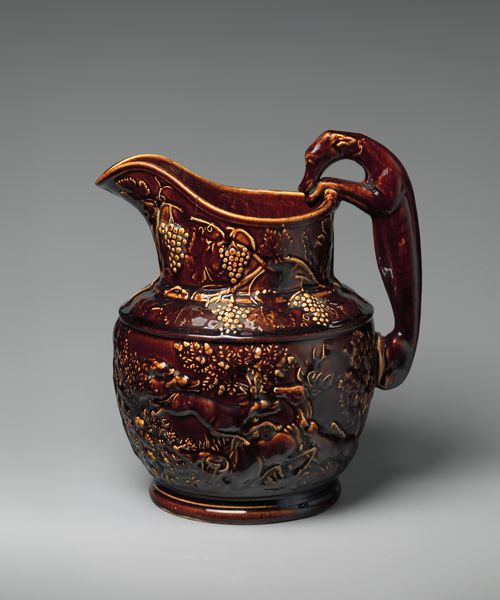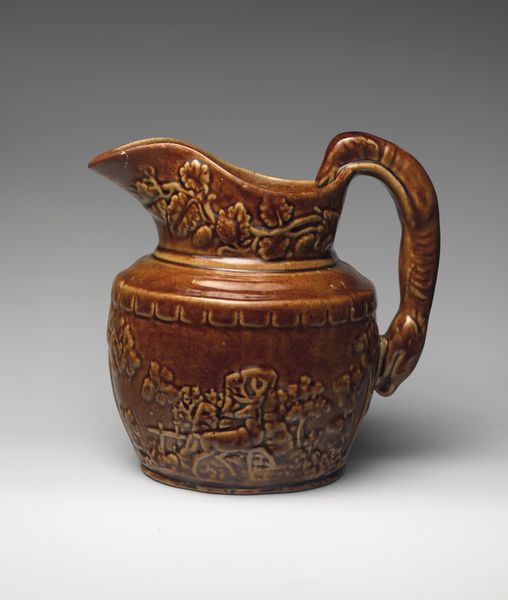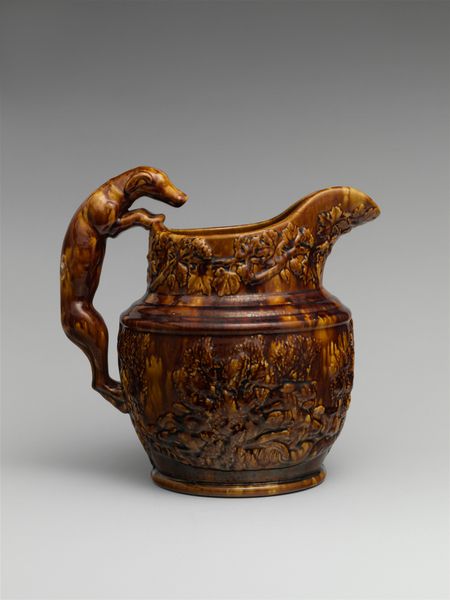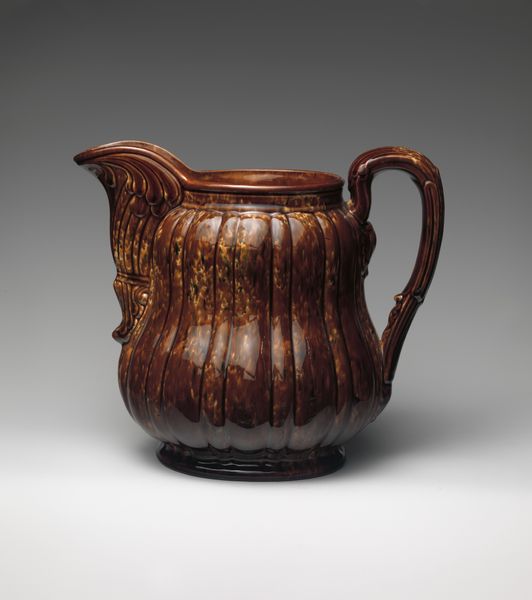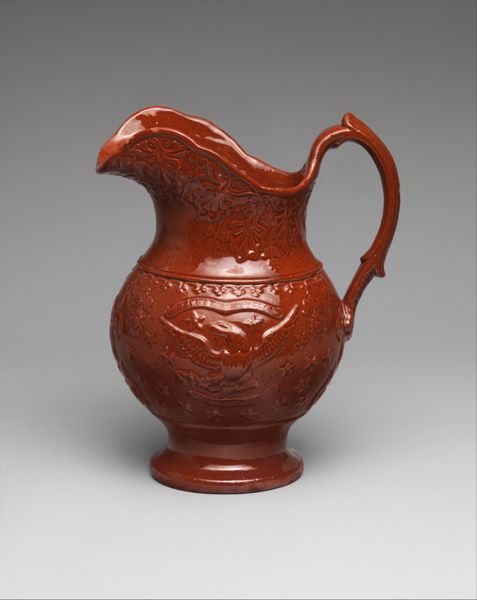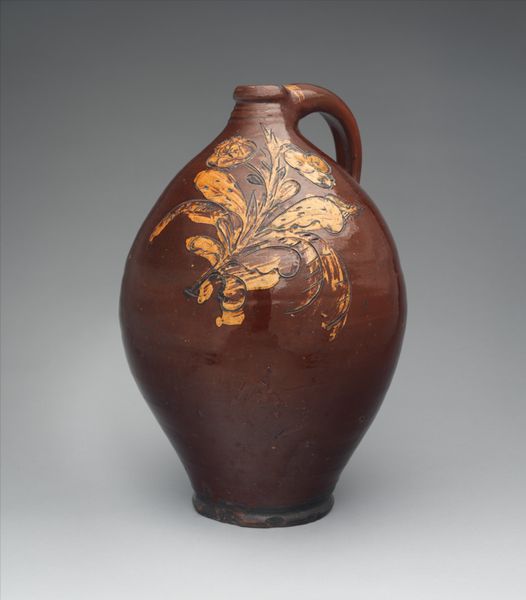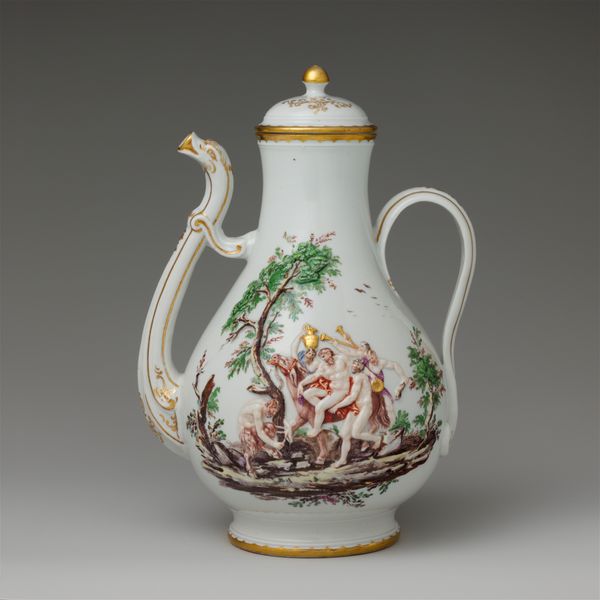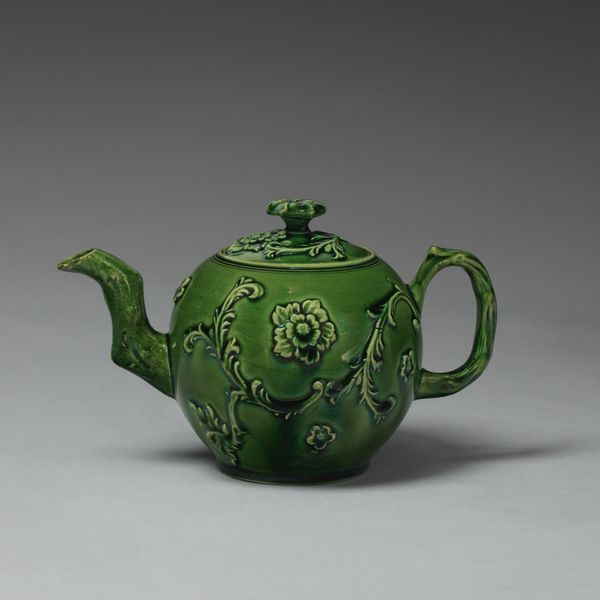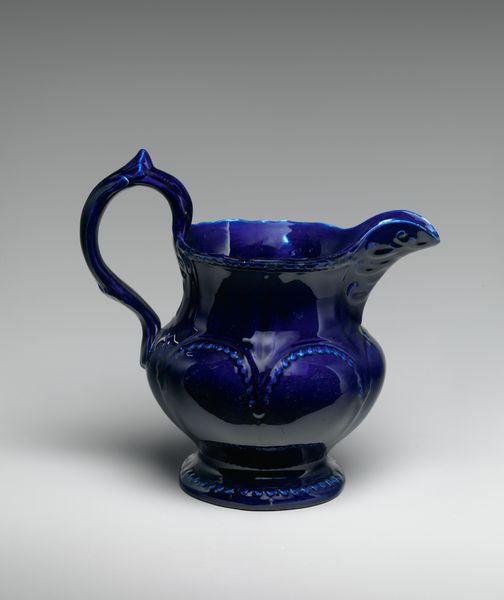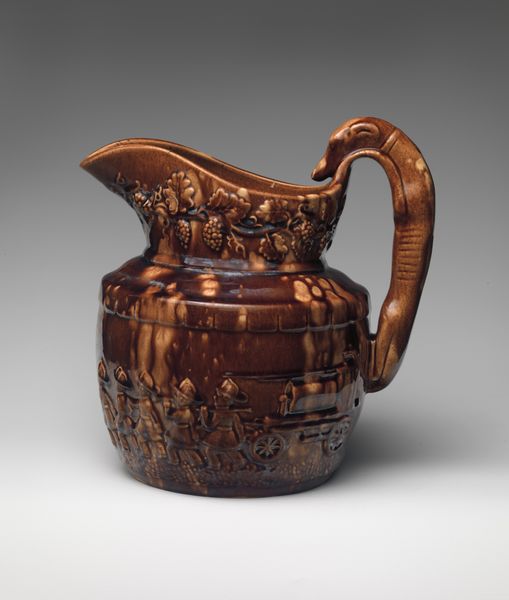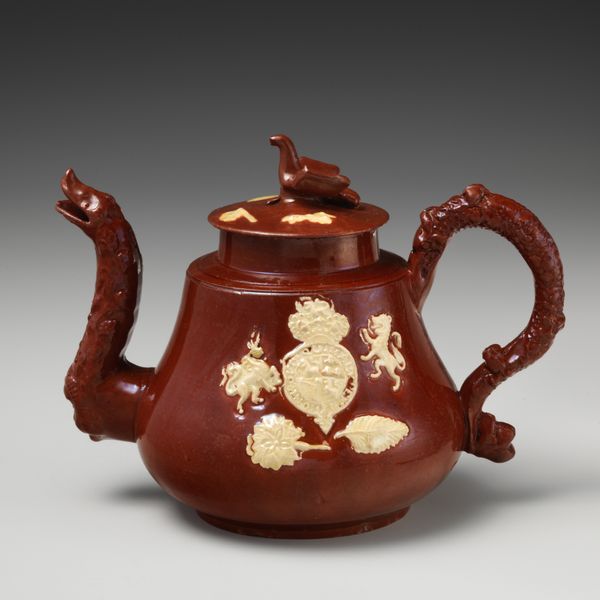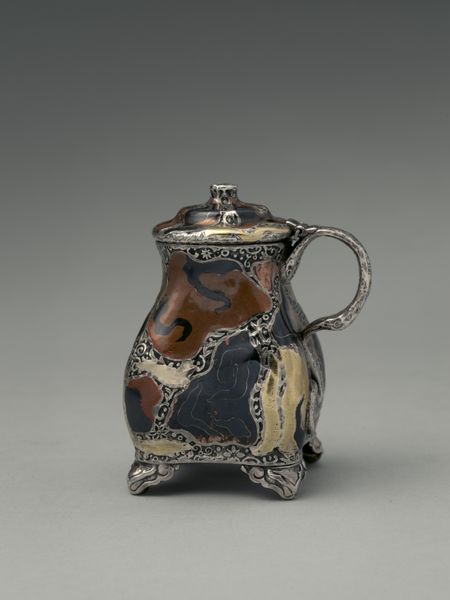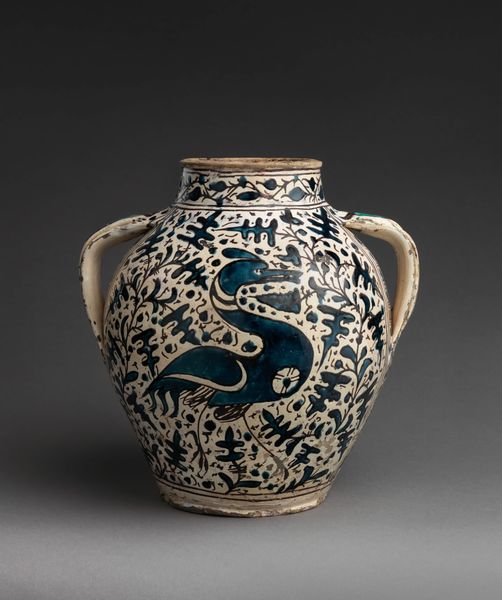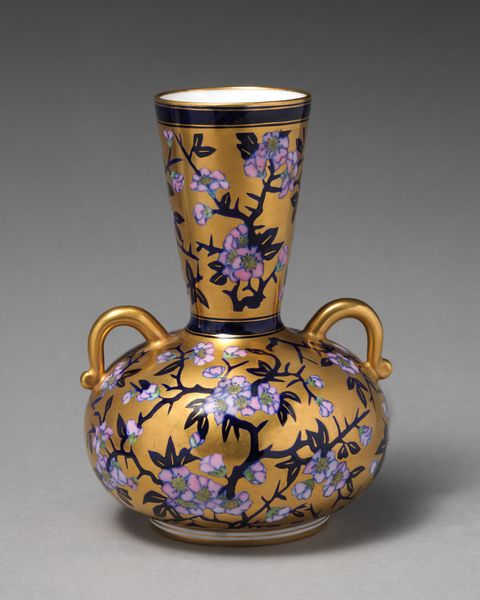
ceramic
#
ceramic
#
flower
#
ceramic
#
decorative-art
Dimensions: H. 8 1/2 in. (21.6 cm)
Copyright: Public Domain
Curator: Here we have a pitcher, crafted by Norton and Fenton between 1845 and 1847. It's currently part of the collection at the Metropolitan Museum of Art. Editor: My initial impression is quite somber, despite the floral decoration. The brown glaze lends it a rather earthy and weighty feel, almost like a stoneware sculpture rather than a functional object. Curator: Exactly. The use of ceramic is central here; understanding the processes involved in its production offers insight into the artisans’ skill and the prevalent technologies of the mid-19th century. It speaks to industrial advances but also traditional craft. Editor: Agreed. We also have to remember the socio-economic contexts in which it was produced and consumed. Consider, who owned these pitchers? What did their presence signify about social class, gender roles within the domestic sphere, or access to material goods? Curator: Absolutely. The piece reflects a period where design intersected with manufacturing, aimed toward an emerging middle class who aspired for both functionality and aesthetic refinement. Notice the moulded floral details—a subtle nod to luxury achieved through mass production. Editor: It makes me think about Victorian ideals and the ‘language of flowers.’ What stories were these flowers meant to convey about the users' values or aspirations, given that objects played a central role in social signalling during that era? The dark glaze may point towards ideas around mourning, or, perhaps, an acquired taste of elegance? Curator: Or possibly influenced by the aesthetic movements which found beauty and value in dark earthy tones—materials valued less for inherent worth than for the labor necessary for its transformation? It really is at a cross-section of taste, production capability and also utility, if you consider that these objects became crucial as tea-drinking became increasingly popular. Editor: And thinking through our current historical lens, we can consider it as part of a narrative surrounding design history. Considering who had access to labor, resources and also knowledge production, there is quite a complicated legacy woven into objects that seem superficially pretty. Curator: Very well put. Examining utilitarian wares provides a concrete reminder that there's significant narrative beyond the traditional lens that focuses on painting and sculpture. Editor: Indeed; these functional objects are loaded cultural artefacts. Food and drink consumption and domestic life always reveal larger trends of the human condition. Curator: Precisely. Thank you for shedding such thoughtful perspectives on what initially appears to be merely a modest, utilitarian object. Editor: It has been my pleasure; I hope our analysis provided a deeper appreciation into objects so familiar they become imperceptible to scrutiny.
Comments
No comments
Be the first to comment and join the conversation on the ultimate creative platform.
